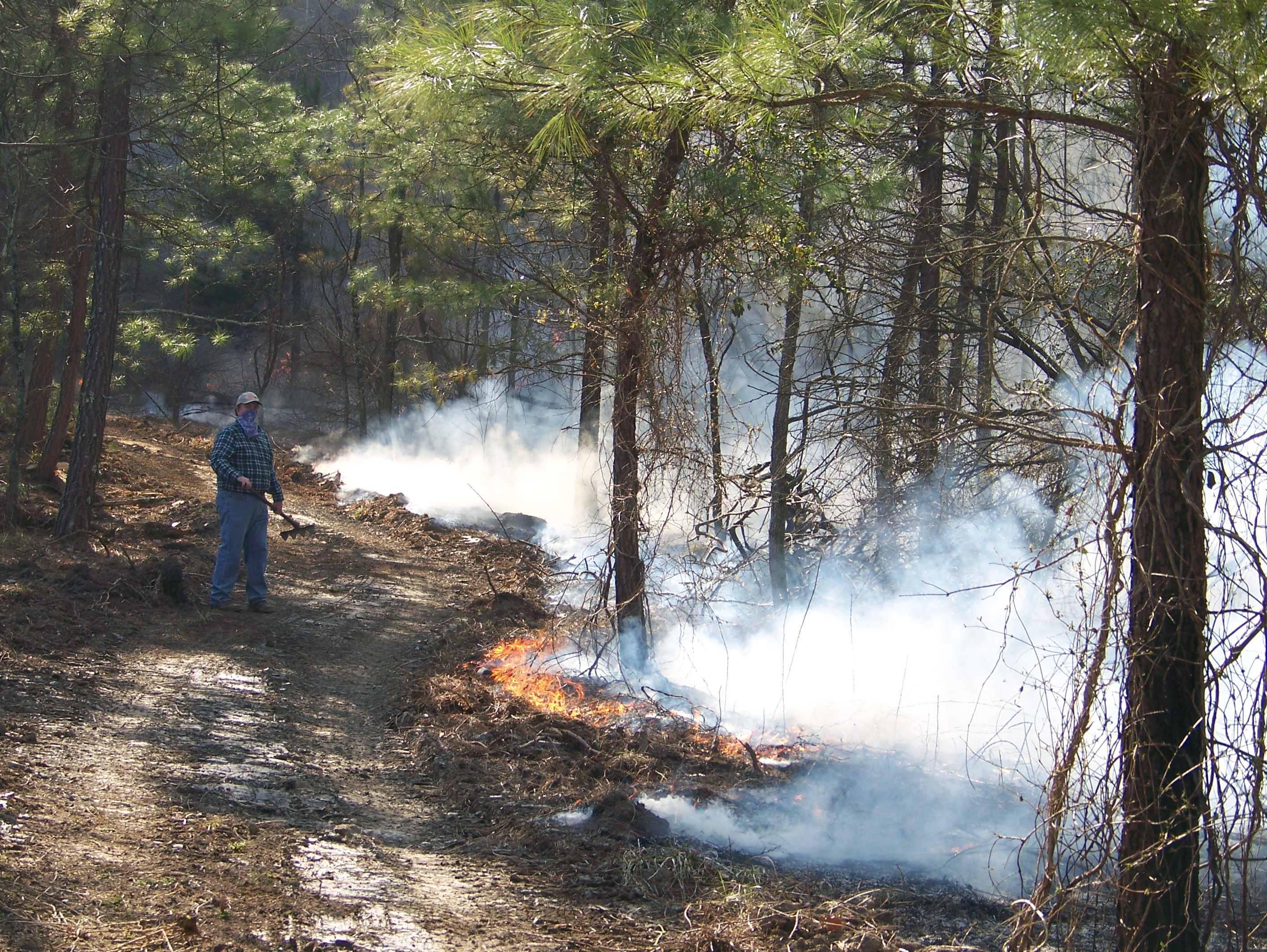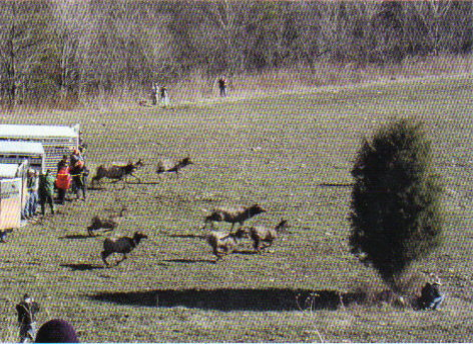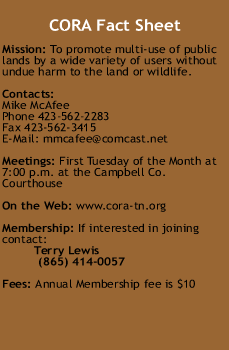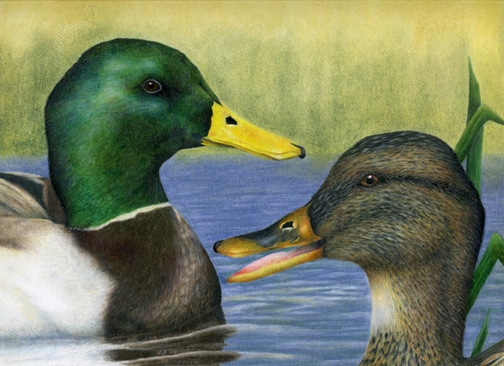A "Right" to Hunt and Fish
Why this effort is one of the most important wildlife and conservation issues of our time.
Hunting and fishing have long been a part of Tennessee’s history, lore and culture. Who hasn’t heard stories of Daniel Boone and Davy Crockett and their exploits across our state? The images are so strong that even to this day they persist with a public and visible force.
Take for example the pioneer dressed college student complete with muzzleloader and coonskin cap roaming the sidelines of Tennessee football games. Or consider the many a political gatherings throughout the spring named "coon supper" or "bird supper" referencing the traditions of hunting raccoons and quail respectively. There are even two hunts given in the name of the highest elected official in the state, the Governor's Dove Hunt and Governor’s One-Shot Turkey Hunt. And how many small towns still hold "turkey shoots" as local fundraisers.
Thus, for many, the thought of Tennessee without the pursuits of chasing game or catching fish is foreign, even if they themselves are not active participants in the pursuits.
However, many are concerned about a future which may someday not allow for hunting and fishing. They point to successful efforts in Europe and Great Britain which have curtailed hunting traditions in the past 10 to 20 years. They despair over the limiting of hunting seasons in California for certain game species. The message they bring to the table is this, do not wait until you need a right to hunt and fish in your state. If you wait until you need it, you will already be too late. In many of these examples, the debates over hunting or fishing have been as much about the differences between rural and urban culture and values as they have been about hunting and fishing. Simply put, to people close to the land, hunting and fishing are largely an accepted part of live. However, to those with little to the connection to the land, or nature and its realities, these activities are not well understood. It is largely this lack of understanding that creates the fertile ground for efforts to stop hunting and fishing.
What is the Why?
For many, the most visible threat to hunting and fishing are the images of animal rights activists campaigning to stop hunting and fishing. Creating a right to hunt and fish is an obvious solution to address these challenges.
For others (from both people whom do and do not hunt, fish or trap) the question of "why does Tennessee need a constitutional amendment which provides for a right to hunt and fish?" is often the first words they have spoken on this topic.
This question is asked from two distinct perspectives; with the first being, "don’t we already have a right to hunt and fish?" (hunter/fisher perspective). The second being "Is it really necessary?" (typically a non-hunter/fisher perspective).
Why Does Tennessee Need a Right to Hunt and Fish in its Constitution?
Currently, Tennesseans do not hold a right to hunt and fish, although the average hunter or fishermen feels they do. In Tennessee, hunting and fishing are a privilege, not a right. This privilege is granted by the state through its authority as provided in Article 11, Section 13 of the Tennessee Constitution.
Given this reality, the most obvious need for such an amendment is quite simple, it helps Tennesseans preserve an important part of our history and a current set of recreation and wildlife management tools and places the interest of citizens equal with that of the state. If laws can be created to allow for hunting and fishing, then logic would dictate that laws could be changed to prohibit hunting and fishing, leading to the conclusion that having a right to hunt and fish in the state constitution provides a stronger protection as compared to a simple law. (read more)
Fire used to improve the wildlife habitat of North Cumberland
By Bob Hodge Knox News Sentinel Sunday March 15, 2009
Mike McAfee of the Campbell Outdoor Recreation Association works a controlled burn last month on the Sundquist Unit of the North Cumberland Wildlife Management Area.
In most cases 600 acres burning on a wildlife management area would be cause for alarm.
A week ago Saturday on the North Cumberland Wildlife Management Area it was a good thing.

The Tennessee Wildlife Resources Agency and over 40 volunteers from area conservation organizations were starting the fires. The goal wasn't simply to torch some woods, but to improve the habitat on one of the biggest WMAs in the southern U.S.
"It's part of a management that will create wildlife openings and allow us to return the landscape more to what it looked like 200 years ago," Terry Lewis, president of the Campbell Outdoor Recreation Association. "This is part of a 10-year plan to create 10,000 acres of wildlife openings."
The volunteers were brought together by the Tennessee Wildlife Federation's Camo and Casting Coalition. The habitat plan, originated by Lewis, was refined and expanded during a series of meetings this winter.
Fire has long been known to be one of the best ways to not only manage but improve wildlife habitat.
The volunteers had attended a U.S. Forest Service class on controlled burns and there was plenty of fire control equipment on the site in case things got out of hand.
"We had probably eight or 10 sites where the fire got across fire lines, but because of the training there was no problem," Lewis said. "We had some hollow trees that act like chimneys that we had to cut down to make sure they didn't fall across the fire line and burn after we left."
The burn was on the Sunquist Unit of the North Cumberland, about 6 miles north of Lafollette.
The site had been clearcut by Fountain Forestry three years earlier and the fire removed most of the secondary growth.
Most of what was burned were very small seedlings and undesirable plants that do not benefit wildlife.
"Those plants take up the sunlight and moisture that could be going to the beneficial plants," Lewis said. "The fire also helps to regenerate seeds of warm season grasses that have been dormant for decades."
The next burn is scheduled for late March at an area adjacent to the same site. Weather permitting, TWRA and its volunteers hope to have as much as 1,000 acres burned this spring.
We built it and they came, both the elk and the people.
By Dan Hicks
A few years ago, I wrote an article about Tennessee’s first wildlife viewing tower dedicated to elk. The piece was called “If you build it they will come” and that statement has certainly become true. Tennessee’s elk viewing area known as Hatfield Knob and located at the Tennessee Wildlife Resources Agency’s Sundquist Wildlife Management Area, is being used daily by the resident elk and people that have traveled to see them.
This phenomenon did not happen by chance. Hundreds of volunteers, along with TWRA employees, have spent countless hours working to prepare a suitable habitat designed to provide everything a herd of wild elk need with the goal of keeping elk at the viewing area year around.
During the fall and winter of 2006, Steve Bennett, TWRA Elk Biologist, developed a user-friendly survey to be left at the elk-viewing tower and filled out by visitors. What a success. More than 600 people took the time to fill out the form and leave their thoughts after experiencing the elk in person. “We figure that only about 20 percent of the visitors bother to stop and fill out the questionnaire and the results show us the tower is being used a great deal and is really enjoyed by the visitors,” said Bennett.
As part of the original plan to release elk in the Royal Blue Wildlife Management Area in 2000, the Campbell Outdoor Recreation Association (CORA) agreed to help the Agency establish an elk viewing area. Later in 2003, the TWRA dedicated the Sundquist WMA and as part of that celebration also released a group of elk from the U.S. Forest Service’s Land Between the Lakes (LBL) east of Interstate 75.... (read more)
CORA Looks Back on Two Decades of Greatness
By Mike McAfee
Campbell Outdoor Recreation Association (CORA) is twenty years old. It seems like only yesterday that CORA was born out of necessity.
At that point in time twenty years ago, many East Tennesseans saw what they believed to be the handwriting on the wall. “Going to the mountains,” as it is referred to locally, to engage in a host of activities such as hunting, fishing, ginsenging, hiking, camping and jeep, ATV, or motorcycle riding which had been a way of life for generations of Tennesseans was abruptly coming to a crashing end. Why?
An approximately 50,000 acre tract of land in Campbell and Scott Counties, commonly known as the Koppers property, had been acquired by Worldwide Purchasing, Incorporated. Tennessee Wildlife Resources Agency (TWRA) previously, in 1977, had entered into an agreement with the Koppers Company, Inc. to acquire hunting rights on the tract of land, and the area was ultimately designated as Koppers WMA. TWRA did not own the land, but provided some enforcement oversight. Worldwide canceled the existing land use agreement with the TWRA and sought $50,000 per year, the amount of local property taxes per year, for continued use of the land by the public.
 |
| Wild Elk hit the ground for the first time in over 150 years as Tennessee begins its historical Elk Restoration Program |
In addition to canceling the agreement with TWRA, Worldwide put the property up for sale or lease in its entirety or in smaller tracts, sending shockwaves throughout Tennessee.
Tennesseans from all walks of life, both in the public and private sector, knew instinctively what was about to happen. This prospect of the property being broken up and being sold or leased to private hunting clubs or other special interest groups and becoming a playground only for the wealthy turned out to be the glue that brought together many Tennesseans to create quite a different future, one that somehow would put this land into public ownership. It was out of this context that CORA was born.
CORA, a not-for-profit public corporation, was founded on a concept referred to as “multiple-use.” Multiple-use is defined as the use of public lands by a wide variety of users without undue harm to the land.
How is multiple-use currently defined by CORA? Multiple-use allows everyone to engage in his or her favorite outdoor recreation with as little official interference as possible and with due regard for the integrity of the land and the plants and animals on it.
When the Rocky Mountain Elk Foundation, the Tennessee Wildlife Federation, TWRA, and others seriously started looking at the reintroduction of elk back into Tennessee, CORA was asked to take on a major role in assessing public support for the reintroduction of wild elk into the Upper Cumberland Plateau.
Diverse groups, ranging from conservation organizations and individual wildlife enthusiasts to the general public, local governments, and private local interests needed a forum to be heard and be involved. CORA, as a trusted facilitator, once again stepped up to the plate.  CORA spearheaded the assessment with a series of public meetings with public officials and interested citizens to address whatever concerns existed, to dispense information, and to get reactions from local people.
CORA spearheaded the assessment with a series of public meetings with public officials and interested citizens to address whatever concerns existed, to dispense information, and to get reactions from local people.
After a formal resolution from CORA, the Tennessee Wildlife Resources Commission approved a proposal for the initial release of 50 elk in an area of approximately 670,000 acres in Campbell, Scott, Morgan, Claiborne, and Anderson counties. Appropriately, the first historic elk release took place on Royal Blue WMA. Elk are once more roaming and thriving in the mountains of East Tennessee after an absence of more than 150 years.
CORA is an official affiliate organization with TWF. “CORA’s leadership in East Tennessee is invaluable,” said TWF Executive Director Mike Butler. “Their untiring commitment to our state’s wildlife and natural resources has been a priceless commodity to our organization as we have worked closely with them throughout the years.”
Reaches Development Center Visits Hatfield Knob Viewing Area
 CORA and the Royal Blue Chapter RMEF hosted an elk viewing opportunity at the Hatfield Knob Wildlife Viewing Area on May 23rd, for some of the residents of the Campbell County Reaches Developmental Center. Reaches Developmental Center houses and provides care for several of the communities disabled and physically challenged individuals....(read more)
CORA and the Royal Blue Chapter RMEF hosted an elk viewing opportunity at the Hatfield Knob Wildlife Viewing Area on May 23rd, for some of the residents of the Campbell County Reaches Developmental Center. Reaches Developmental Center houses and provides care for several of the communities disabled and physically challenged individuals....(read more)
CORA Attends White House Conference on North American Wildlife Policy
CORA President, Terry Lewis attended the White House Conference on North American Wildlife Policy last week in Reno, NV.  More than 500 representatives of wildlife conservation groups and wildlife agencies from around the country met to discuss the development of a comprehensive ten year Recreational Hunting and Wildlife Conservation Plan.
The plan is a result of Executive Order (E.O.) # 13443: Facilitation of Hunting Heritage and Wildlife Conservation, signed by President Bush in August 2007 directing the Department of Interior and Agriculture to "facilitate the expansion and enhancement of hunting opportunities and the management of game species and their habitat."
More than 500 representatives of wildlife conservation groups and wildlife agencies from around the country met to discuss the development of a comprehensive ten year Recreational Hunting and Wildlife Conservation Plan.
The plan is a result of Executive Order (E.O.) # 13443: Facilitation of Hunting Heritage and Wildlife Conservation, signed by President Bush in August 2007 directing the Department of Interior and Agriculture to "facilitate the expansion and enhancement of hunting opportunities and the management of game species and their habitat."
(read more)
Campbell County Student Wins Tennessee Federal Junior Duck Stamp Contest
Campbell County High School senior Brandon Sharp of LaFollette won the overall 2008 Tennessee Federal Junior Duck Stamp art competition. The Best of Show award winner was of a pair of mallards. TWF, along with TWRA and Bass Pro Shops are partners in the event sponsored by the U.S. Fish and Wildlife Service.
 More than 400 individuals entered Tennessee’s 14th Junior Duck Stamp Contest in four different age group categories. There were 11 other finalists for the Best of Show as a result of their first place award. First place winners included Kindergarten-Third Grade; Simeon Hinchman (Chattanooga), Juli-Cait Castellaw and Garrett Moore (both of Dyersburg), Fourth-Six Grade; Joanna Rush (Chattanooga), and Logan Rummells and Hailey McKee (both of Dyersburg), Seventh-Ninth Grade; Thomas Fawcett (Bolivar), Heather Calfee (Cookeville), and Callie Oldfield (Joelton), 10th-12th Grade; Alyssa Skillman (Chattanooga), and Brittany Hall (Dyersburg).
Ribbons, plaques, and other prizes were presented to the top 100 winners at an awards ceremony at the Opryland Hotel in Nashville on May 3. Sharp received a $1,000 scholarship, provided by known stamp collector former Tennessee Wildlife Resources Commissioner and long-time supporter of the event, Mrs. Jeanette Rudy.
Sharp’s winning artwork will move on to the national competition held at the San Diego Zoo in California along with the winners from the other 50 states and District of Columbia. The winner of the national competition will be used as the design for the 2008-2009 Federal Junior Duck Stamp. The winner’s artwork will travel throughout the country on display in galleries and wildlife museums for one year.
More than 400 individuals entered Tennessee’s 14th Junior Duck Stamp Contest in four different age group categories. There were 11 other finalists for the Best of Show as a result of their first place award. First place winners included Kindergarten-Third Grade; Simeon Hinchman (Chattanooga), Juli-Cait Castellaw and Garrett Moore (both of Dyersburg), Fourth-Six Grade; Joanna Rush (Chattanooga), and Logan Rummells and Hailey McKee (both of Dyersburg), Seventh-Ninth Grade; Thomas Fawcett (Bolivar), Heather Calfee (Cookeville), and Callie Oldfield (Joelton), 10th-12th Grade; Alyssa Skillman (Chattanooga), and Brittany Hall (Dyersburg).
Ribbons, plaques, and other prizes were presented to the top 100 winners at an awards ceremony at the Opryland Hotel in Nashville on May 3. Sharp received a $1,000 scholarship, provided by known stamp collector former Tennessee Wildlife Resources Commissioner and long-time supporter of the event, Mrs. Jeanette Rudy.
Sharp’s winning artwork will move on to the national competition held at the San Diego Zoo in California along with the winners from the other 50 states and District of Columbia. The winner of the national competition will be used as the design for the 2008-2009 Federal Junior Duck Stamp. The winner’s artwork will travel throughout the country on display in galleries and wildlife museums for one year.
Coal Mining in Tennessee
Please see the attached file for the newsletter.
Coal Mining in Tennessee.